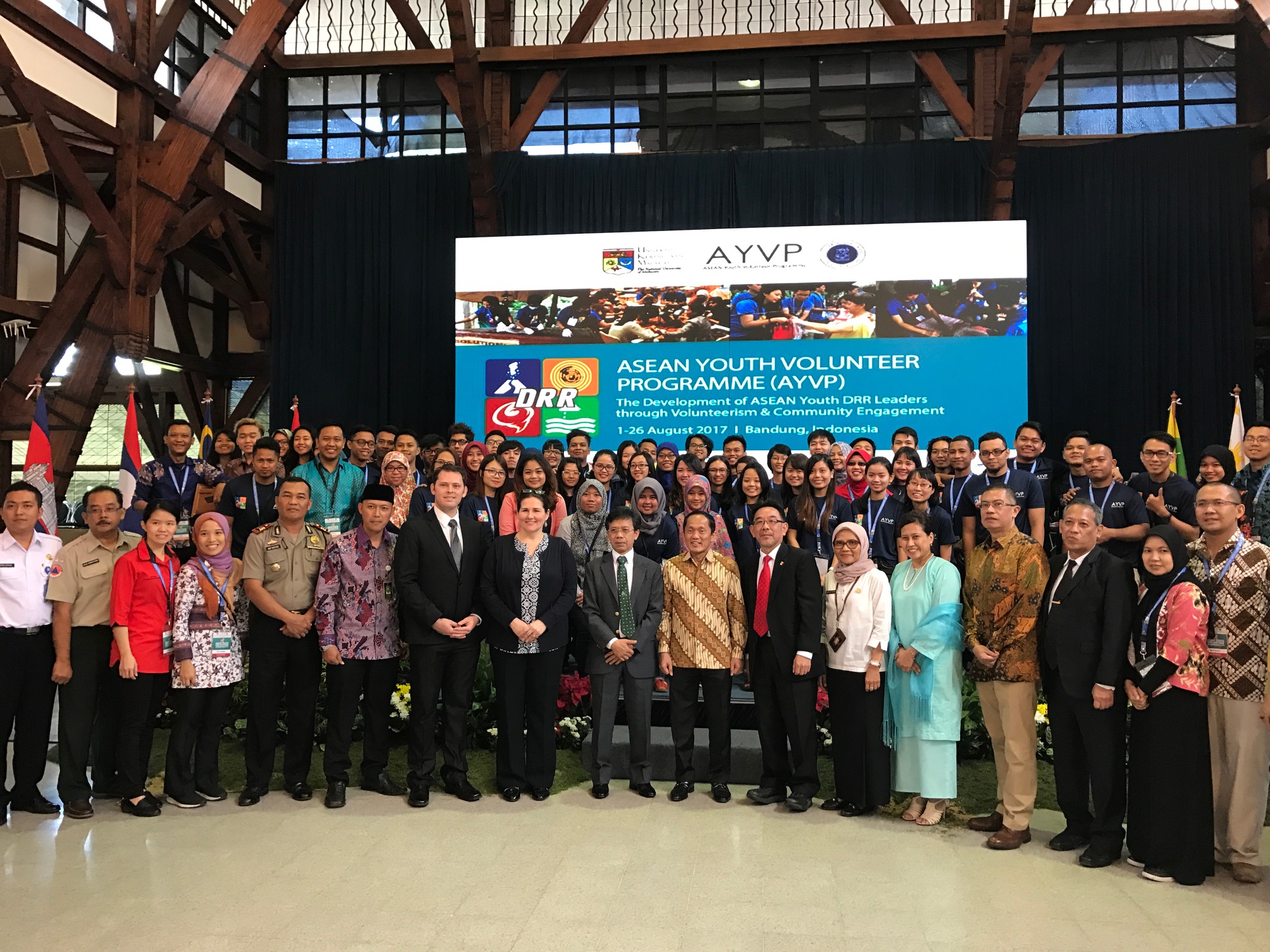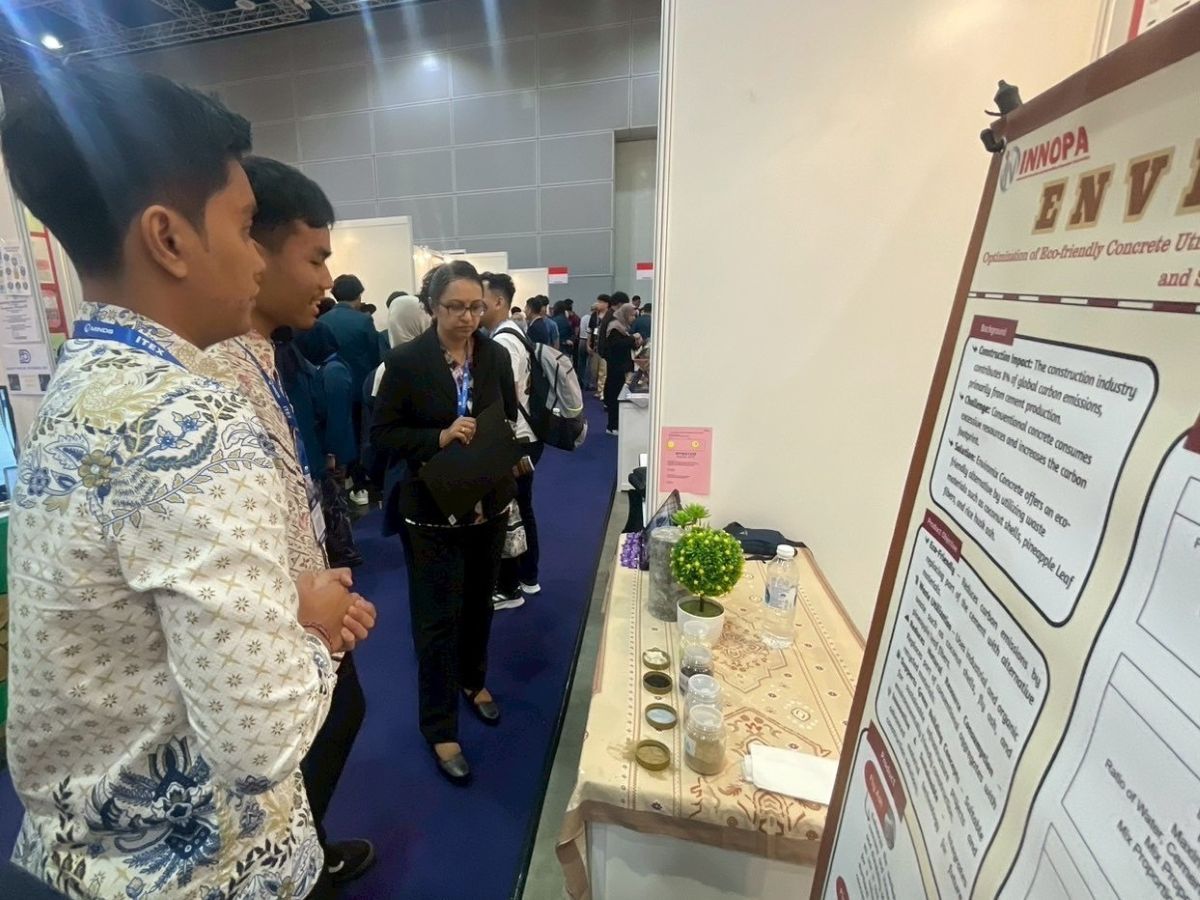AYVP through the Eye of the Participants
By Zoealya Nabilla Zafra
Editor Zoealya Nabilla Zafra

BANDUNG, itb.ac.id – As general public has already known, ASEAN region is prone to natural disaster. Indonesia and The Philippines are parts of Pacific Ring of Fire, volcanic regions with earthquake potency. Moreover, Floods and Landslides in Malaysia, Indonesia, and Laos; Tornados in The Philippines; and forest fires in Indonesia are the examples of natural disasters occurring in ASEAN. However, information about preemptive effort to facing natural disaster has not widely spread. This is the problem ASEAN trying to solve in ASEAN Youth Volunteer Program (AYVP) 2017, carrying theme Disaster Risk Reduction (DRR).
2017 AYVP is held by ASEAN Secretary in collaboration with United States Agency for International Development (USAID), and will last for 26 days (01-26/08/17). For hands-on experience, the activity will take place in Lembang Village and Cigadung Village. It is participated by 50 participants out of 1850 applicants. All these 50 ASEAN representatives are then accompanied by 10 facilitators from Indonesia with experience in natural disaster. Ninh (26) from Vietnam admitted her interest to Volunteer. “I love volunteering!”. Because Vietnam is frequently hit by storm, Ninh is interested to make a flood map that use flood height as the input and rendered predicted flood-area map as the output. Hence, Ninh use flood traces data and topography data using Geographic Information System (GIS).
The purpose of this flood map is to facilitate evacuation. By discovering the predicted area, residents of the area could evacuate to other area before the flood happens to minimize casualties. Another participant, Shikin (20) said that she participates because it is related to her study. “The reason why I joined this program is because it’s related to what I’ve learned at Business and Social Enterprise, so I wish to be able to contribute a little bit of something when I’m here,” she explained.
Gin (22), a survivor of 2013 Haiyan Typhoon, said that he has an idea called Project Educate. This project focuses on disaster preparation study, evacuation steps, and leadership. The main concentration is education. “Because I always believe as cliché as it may sound, education is really the key to empowering people and making them realize how serious climate change and disaster risk reduction management is when it comes to the sustainability of the community,” Gin said. The aim of the project is to encourage youths to develop leadership and participate in their community through volunteerism in disaster risk mitigation and management. The project will directly collaborate with the association of political sciences students where Gin graduated from. Gin also hoped the project attracts National Disaster Risk Reduction Management Council of The Philippines, local government units in The Philippines, and academicians to give corresponding knowledge.
Gin thought that to make Project Educate run smoothly it needs to emphasize on the development of youth leadership. He thought Philippines’ youths tend to be restrained by their environment despite having brilliant ideas, “[It is] because of the lack of support, lack of mentorship, lack of funding.” The focus of this project is to see the response from three dangerous-class coastal areas. Despite knowing the risk of living on their current place, relocating the residents could still be a problem because the residents’ bread and butter stays. 2017 AYVP is expected to continue even after the conclusion of four week activities because monitoring to the activity of the participants will continue after they go home. Development report of their respective project is continually reviewed. It is hoped that all projects will give significant development to their respective country.

.jpg)
.png)
.jpg)
.jpg)
.jpg)



